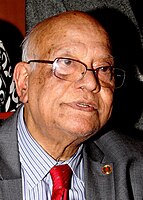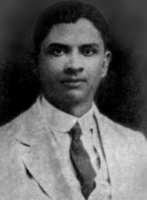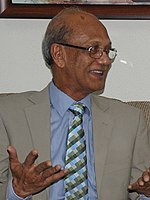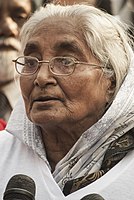LabLynx Wiki
Contents
 Map of Sylheti speaking areas of South Asia | |
| Total population | |
|---|---|
| c. 10.3 million[1][2] | |
| Regions with significant populations | |
| Bangladesh (Sylhet Division) India (Barak Valley, Hojai, North Tripura, Unakoti, Shillong) Middle East (GCC countries) Western world (United Kingdom, United States, Canada) | |
| Languages | |
| Sylheti (L1) Bengali (L2) | |
| Religion | |
| Predominantly: Significant minority:
| |
| Related ethnic groups | |
The Sylheti (English: /sɪˈlɛti/) or Sylhetis are an Indo-Aryan ethnocultural group,[3] that are associated with the Sylhet region (Sylhet Division of Bangladesh and the Karimganj district of south Assam, India). There are strong diasporic communities in Barak Valley of Assam, India,[4][1][5][6][7] North Tripura,[1] Shillong, Meghalaya,[8] and Hojai, Central Assam.[9] Outside South Asia, there are significant numbers in the United Kingdom,[10] the United States,[11][12] and Canada.[13]
They speak Sylheti, an eastern Indo-Aryan language that is considered "a distinct language by many and a dialect of Bengali by some others".[14] Sylheti identity is associated primarily with its regional culture and language, alongside a broader cultural and ethnic Bengali identity.[15][9]
History
In September 1874, the British East India Company made Sylhet district a part of the non-regulation Chief Commissioner's Province of Assam (Northeast Frontier Province) for commercial development.[16][17] The transfer led to the natives of Sylhet protesting against the British viceroy Lord Northbrook as they viewed themselves as a part of the Bengali people, and distinct from the Assamese. Leaders of both the Hindu and Muslim communities submitted a memorandum to Northbrook on 10 August 1874.[18] Northbrook was eventually able to convince the people of Sylhet by assuring them that education and justice will still be administered under Bengal,[19] and highlighting the economic opportunity for Sylhetis in Assam's tea industry.[20] With the approach of the independence movement towards 1920, Sylhetis began forming organisations such as the Sylhet Peoples' Association and Sylhet-Bengal Reunion League which demanded Sylhet to be reincorporated to Bengal.[21]
Culture
Sylheti folklore is influenced by Hindu, Sufi, Turco-Persian and native ideas. Chandra Kumar De of Mymensingh is known to be the first researcher of Sylheti folklore.[22] Archives of old works are kept in Kendriya Muslim Sahitya Sangsad in Sylhet (also known as the Sylhet Central Muslim Literary Society) – the oldest literary organisation in Bengal and one of the oldest in the subcontinent.
Literature
Sylheti Nagri

A distinct linguistic register emerged in the Sylhet region through the development of the Sylheti Nagri script. Though having similar features to the more prevalent Dobhashi literary dialect of Middle Bengali, the Sylheti Nagri script fostered a unique literary culture of the Sylhet region.[23] Its distinction is marked with its simpler script which is related to the Kaithi script, and its phonology being deeply influenced by the Sylheti vernacular.[24] Its most renowned writer was Sadeq Ali whose Halatunnabi was famed as household item amongst rural Muslim communities.[25][26] Manuscripts have been found of works such as Rag Namah by Fazil Nasim Muhammad, Shonabhaner Puthi by Abdul Karim, and the earliest known work Talib Huson (1549) by Gholam Huson.[27] Late Nagri writers include Muhammad Haidar Chaudhuri who wrote Ahwal-i-Zamana in 1907 and Muhammad Abdul Latif who wrote Pohela Kitab o Doikhurar Rag in 1930.[28]
Bengali
It has been argued that the first Bengali translation of the Mahabharata was written by Sri Sanjay of Sylhet in the 17th century.[29][30] The 18th-century Hattanather Panchali (Hattanath chronicles) written by Ganesh Ram Shiromani was a Bengali ballad of 36,000 lines which detail the early history of Sylhet though its authenticity is questionable.[25] When Sylhet was under the rule of the Twipra Kingdom, medieval Sylheti writers using the Bengali script included the likes of Dwija Pashupati, the author of Chandravali – considered one of the earliest Sylheti works.[31] Nasiruddin Haydar of Sylhet town wrote the Tawarikh-e-Jalali, the first Bengali biography of Shah Jalal. Gobind Gosai of Masulia wrote Nirbban Shongit, Gopinath Dutta wrote Dronporbbo, Dotto Bongshaboli and Nariporbbo and Nur Ali Khan of Syedpur wrote Marifoti Geet. Songwriters and poets such as Radharaman Dutta, Hason Raja and Shah Abdul Karim, significantly contributed to Bengali literature and their works remain popular across Bengal in present-times.[32] Numerous Bengali writers emerged in Ita, such as Kobi Muzaffar Khan, Gauri Shankar Bhatta and Golok Chand Ghosh. Muslim literature was based upon historical affairs and biographies of prominent Islamic figures.
In 2021, Shuvagoto Chowdhury was awarded the Bangla Academy Literary Award.[33]
Other languages

Sylhetis have contributed to Sanskrit literature throughout history. In the 15th century, Jagadish Tarkalankar wrote several Sanskrit books, many of which were made up of numerous volumes. Tarlankar's Shabdashaktiprakashika was a famous textbook for Sanskrit learners. His contemporary, Advaita Acharya of Laur, wrote two medieval Sanskrit books, Yogabashishta-Bhaishta and Geeta Bhaishya.[34] In the 16th century, Murari Gupta wrote the first Sanskrit biography of Chaitanya Mahaprabhu and Raghunath Shiromani wrote 40 books in Sanskrit.[35][36] Some works written by Sylhetis have also been translated into other languages. For example, Ashraf Hussain's Manipurer Ladai was translated into English by Dinesh Chandra Sen and included in the Eastern Bengal Ballads.[37][30]
Sylhet, in particular the Taraf, was also an esteemed centre for the study of Persian, an official language up until the British period, due to the high population of foreign missionaries from Central Asia and Persia following the Conquest of Sylhet. Ma'dan al-Fawaid was written in 1534 by Syed Shah Israil who is considered to be Sylhet's first author.[38] Other prominent writers include Muhammad Arshad, Syed Rayhan ad-Din and Syed Pir Badshah.[39][40] Reyazuddin of Taraf wrote a Persian book on "Dream Fruit".[41] Ala Bakhsh Mazumdar Hamed was known to have written Tuhfatul Muhsineen and Diwan-i-Hamed. Collectively, the works of these two people belonging to the Mazumdar family of Sylhet, are regarded amongst the most creative literary works in the Sylhet region. Majid Bakht Mazumdar wrote an English book on the family history.[42]
In the 19th century, Urdu had a somewhat aristocratic background in Sylhet and notable families that spoke it included the Nawabs of Longla and the Mazumdars of Sylhet. Moulvi Hamid Bakht Mazumdar, who was also fluent in Persian, wrote the Urdu prose Ain-i-Hind, a history of the Indian subcontinent.[25] Literature written in this period included Nazir Muhammad Abdullah Ashufta's Tanbeeh al-Ghafileen, written in 1894, and the poems of Moulvi Farzam Ali Bekhud of Baniachong. Hakim Ashraf Ali Mast and Fida Sylheti were prominent Urdu poets of Sylhet in the 19th century, the latter being a disciple of Agha Ahmad Ali.[43] In 1946, the Anjuman-i Taraqqi-i Urdu performed a mushaira in Sylhet attracting the likes of Hafeez Jalandhari, the lyricist of the National Anthem of Pakistan.[44]
Distribution
Diaspora

Lord Cornwallis introduced the Permanent Settlement Act of Bengal in 1793 and it altered the social, political and economic landscape of the Sylhet region; socioeconomic ramification for former landlords was severe as the land changed hands. On juxtapose, colonial administration opened new windows of opportunities for young men, who sought employment merchant ship companies. Young men from Sylhet boarded ships primarily at Kolkata, Mumbai and Singapore. Many Sylheti people believed that seafaring was a historical and cultural inheritance due to a large proportion of Sylheti Muslims being descended from foreign traders, lascars and businessman from the Middle East and Central Asia who migrated to the Sylhet region before and after the Conquest of Sylhet.[45] Kasa Miah, who was a Sylheti migrant, claimed this was a very encouraging factor for Sylhetis to travel to Calcutta aiming to eventually reach the United States and United Kingdom.[46]
Barak Valley
The Sylheti community in the Barak Valley, contiguous to Sylhet, is one of the eminent diasporic communities where they have been able to recreate the Sylhet environ.[4] The Barak Valley consists of three districts in the Indian state of Assam, which are home to a Bengali-speaking majority population as opposed to Assamese.[47] Geographically the region is surrounded by hills from all three sides except its western plain boundary with Bangladesh. Though never a part of Sylhet the Barak Valley hosts the presence of the same Sylheti dialect. Niharranjan Ray, author of Bangalir Itihash, claims that "South Assam / Northeastern Bengal or Barak Valley is the extension of the Greater Surma/Meghna Valley of Bengal in every aspect from culture to geography".[48]
A movement emerged in the 1960s in this Sylheti-majority area of India. Referred to as the Bengali Language Movement of the Barak Valley, Sylhetis protested against the decision of the Government of Assam to make Assamese the only sole official language of the state knowing full well that 80% of the Barak Valley people are Bengalis. The main incident took place on 19 May 1961 at Silchar railway station in which 11 Sylheti-Bengalis were killed by the Assamese police. Sachindra Chandra Pal and Kamala Bhattacharya were two notable Sylheti students murdered by the Assam Rifles during the movement.
Outside South Asia
Today, the Sylheti diaspora numbers around one million, mainly concentrated in the United Kingdom, United States, Canada, Germany, Italy, France, Australia, Portugal, Spain, Sweden, Finland and the Middle East and other European countries. However, a 2008 study showed that 95% of Sylheti diaspora live in the UK.[49] In the United States, most Sylhetis live in New York City, though sizeable populations also live in Atlanta, Houston, Dallas, Los Angeles, Miami, and Detroit.
Some argue that remittances sent from Sylheti diaspora around the world back to Bangladesh have negatively affected development in Bangladesh, where a lack of government initiatives has caused economic inertia.[50]
According to neo-classical theory, the poorest would move to the richest countries and those from densely populated areas would move to more sparsely populated regions. This has clearly not been the case. The brain drain was a movement from core to core, purely on economic maximisation, while it was young Sylheti pioneers with access to financial resources that migrated from a severely overpopulated Bangladesh to the overcrowded streets of Spitalfields, poorest from all parts of Bangladesh migrated to Sylhet for a better life, causing a severe overcrowding and scarcity of resources in Sylhet.[51]
Religion

Sunni Islam is the largest denomination with majority following the Hanafi school of law.[53] There are significant numbers of people who follow Sufi ideals,[52] although the revivalist Deobandi movement is also popular with many being a part of the Tablighi Jamaat. There is a very small minority of Shia Muslims who gather every year during Ashura for the Mourning of Muharram processions. Places of procession include the Prithimpasha Nawab Bari in Kulaura, home to a Shia family, as well as Balaganj, Osmani Nagar and Rajtila.
Hinduism is the second largest religion amongst Sylhetis. Other minority religions include Christianity and there was a presence of Sikhism after Guru Nanak's visit to Sylhet in 1508 to spread the religion and build a gurdwara there. This Gurdwara was visited twice by Tegh Bahadur and many hukamnamas were issued to this temple in Sylhet by Guru Gobind Singh. In 1897, the gurdwara collapsed after the earthquake.
Notables
Popular modern writers and poets from the region include Abdur Rouf Choudhury, Dilwar Khan and Chowdhury Gulam Akbar. Muhammad Mojlum Khan is a non-fiction writer best known for writing the English biographical dictionary, The Muslim 100. Prominent Bengali language non-fiction writers include Syed Murtaza Ali, Syed Mujtaba Ali, Dewan Mohammad Azraf, Abed Chaudhury, Achyut Charan Choudhury, Arun Kumar Chanda, Asaddor Ali, Ashraf Hussain and Dwijen Sharma.
Reputed artists and media personalities from the region include Salman Shah who is considered one of the greatest actors in Bangladeshi film industry, Runa Laila who is a prominent singer with international acclaim, Hason Raja and Shah Abdul Karim who are the pioneers of folk music in Bangladesh.
Cricket and football are the most popular sports amongst Sylhetis. Many Sylheti cricketers have played for the Bangladesh national cricket team such as Alok Kapali, Enamul Haque Jr, Nazmul Hossain, Rajin Saleh and Tapash Baisya. Beanibazar SC is the only Sylheti club which as qualified for the Bangladesh League and Alfaz Ahmed was a Sylheti who played for the Bangladesh national football team. Hamza Choudhury is the first Bangladeshi to play in the Premier League and is predicted to be the first British Asian to play for the England national football team.[54] Bulbul Hussain was the first breakthrough Sylheti professional wheelchair rugby player. Rani Hamid is one of the most successful chess players in the world, winning championships in Asia and Europe multiple times. Ramnath Biswas was a revolutionary soldier who embarked on three world tours on a bicycle in the 19th century.
-
Sundari Mohan Das was a veteran of the Swadeshi movement and founder of Calcutta National Medical College
-
Abul Maal Abdul Muhith, an economist, diplomat, and Bengali Language Movement veteran who served as Bangladesh's second Finance Minister.
-
Gurusaday Dutt was the founder of the Bratachari movement which advocated for spiritual and social development
-
Nurul Islam Nahid was the former Education Minister of Bangladesh, responsible for secondary, vocational and tertiary education in Bangladesh.
-
Achyut Charan Choudhury is most well known for his monumental work on the history of the Sylhet
-
Rawshan Ara Bachchu is a Sylheti activist best known for her role in the Bengali language movement of 1952
See also
Citations
- ^ a b c Sylheti at Ethnologue (22nd ed., 2019)

- ^ "Ranked: The 100 Most Spoken Languages Around the World". Visual Capitalist. 15 February 2020. Retrieved 15 July 2020.
- ^ Shahela Hamid (2011). Language Use and Identity: The Sylheti Bangladeshis in Leeds. pp.Preface. Verlag Peter Lang. Retrieved on 4 December 2020.
- ^ a b "The Sylheti community in Barak Valley thus presents a dispora to be located in a region marked by the geographical and cultural continuity from Sylhet. The official language of the region being Bengali, the community found mechanisms to reconstruct the environs of its lost ‘desh’ within a new state." (Deb & Bhan 2016:2)
- ^ Bhattacharjee 2013, p. 59–67.
- ^ Wouters, Jelle J. P.; Subba, Tanka B. (30 September 2022). The Routledge Companion to Northeast India. Taylor & Francis. p. 61. ISBN 978-1-000-63699-4.
- ^ Glanville Price (2000). Encyclopedia of the Languages of Europe. pp. 91–92.
- ^ Bhattacharjee 2013, p. 62.
- ^ a b Simard, Candide; Dopierala, Sarah M; Thaut, E Marie (2020). "Introducing the Sylheti language and its speakers, and the SOAS Sylheti project" (PDF). Language Documentation and Description. 18: 5. Retrieved 4 December 2020.
- ^ Sylhetis, Assamese, 'Bongal Kheda', and the rolling thunder in the east The Daily Star. Iftekhar Ahmed Chowdhury. 7 September 2018. Retrieved on 5 December 2022.
- ^ Nazli Kibria (2011). Muslims in Motion. pp. 58–61. Rutgers University Press.
- ^ Sook Wilkinson (2015). Asian Americans in Michigan. pp. 166–167. Wayne State University Press.
- ^ Harald Bauder (2012). Immigration and Settlement Challenges, Experiences, and Opportunities. Canadian Scholars' Press Incorporated. p. 239.
- ^ "Along the linguistic continuum of eastern Indic languages, Sylheti occupies an ambiguous position, where it is considered a distinct language by many and also as a dialect of Bengali or Bangla by some others."(Mahanta & Gope 2018:81)
- ^ Bhattacharjee 2013, p. 54–67.
- ^ Bhattacharjee 2013, p. 53–54.
- ^ Hossain, Ashfaque (2013). "The Making and Unmaking of Assam-Bengal Borders and the Sylhet Referendum". Modern Asian Studies. 47 (1): 260. doi:10.1017/S0026749X1200056X. JSTOR 23359785. S2CID 145546471.
To make (the Province) financially viable, and to accede to demands from professional groups, (the colonial administration) decided in September 1874 to annex the Bengali-speaking and populous district of Sylhet.
- ^ Hossain, Ashfaque (2013). "The Making and Unmaking of Assam-Bengal Borders and the Sylhet Referendum". Modern Asian Studies. 47 (1): 261. doi:10.1017/S0026749X1200056X. JSTOR 23359785. S2CID 145546471.
- ^ Hossain, Ashfaque (2013). "The Making and Unmaking of Assam-Bengal Borders and the Sylhet Referendum". Modern Asian Studies. 47 (1): 262. doi:10.1017/S0026749X1200056X. JSTOR 23359785. S2CID 145546471.
It was also decided that education and justice would be administered from Calcutta University and the Calcutta High Court respectively.
- ^ Hossain, Ashfaque (2013). "The Making and Unmaking of Assam-Bengal Borders and the Sylhet Referendum". Modern Asian Studies. 47 (1): 262. doi:10.1017/S0026749X1200056X. JSTOR 23359785. S2CID 145546471.
They could also see that the benefits conferred by the tea industry on the province would also prove profitable for them. For example, those who were literate were able to obtain numerous clerical and medical appointments in tea estates, and the demand for rice to feed the tea labourers noticeably augmented its price in Sylhet and Assam enabling the Zaminders (mostly Hindu) to dispose of their produce at a better price than would have been possible had they been obliged to export it to Bengal.
- ^ Bhattacharjee 2013, p. 54–55.
- ^ Ahmed, Sofe (August 2014). "Research on Folklore in Sylhet Region of Bangladesh: A Study of Chowdhury Harun Akbor". International Journal on Studies in English Language and Literature. 2 (8): 131–134.
- ^ Bhattacharjee 2013, p. 57–58.
- ^ Thibaut d'Hubert (2018). Jāmī in Regional Contexts: The Reception of ʿAbd al-Raḥmān Jāmī’s Works in the Islamicate World, ca. 9th/15th-14th/20th Century. pp.667-678. Brill.
- ^ a b c Choudhury, Achyut Charan (2000) [1916]. Srihatter Itibritta: Uttorangsho (in Bengali). Kolkata: Kotha.
- ^ Sadiq, Mohammad (2008). Sileṭi nāgarī : phakiri dhārāra phasala সিলেটি নাগরী: ফকিরি ধারার ফসল. Asiatic Society of Bangladesh. OCLC 495614347.
- ^ Muhammad Ashraful Islam. "Sylheti Nagri". Banglapedia: National Encyclopedia of Bangladesh. Asiatic Society of Bangladesh.
- ^ Roy, Asim (1983). The Islamic Syncretistic Tradition in Bengal. Princeton University Press. ISBN 9780691053875.
- ^ Mohanta, Sambaru Chandra (2012). "Mahabharata". In Sirajul Islam; Miah, Sajahan; Khanam, Mahfuza; Ahmed, Sabbir (eds.). Banglapedia: the National Encyclopedia of Bangladesh (Online ed.). Dhaka, Bangladesh: Banglapedia Trust, Asiatic Society of Bangladesh. ISBN 984-32-0576-6. OCLC 52727562. OL 30677644M. Retrieved 6 November 2024.
- ^ a b Husam, Shamshad. "বাংলা সাহিত্যে সিলেট". Thikana (in Bengali).
- ^ Bhowmik, Kalpana (2012). "Dwija Pashupati". In Sirajul Islam; Miah, Sajahan; Khanam, Mahfuza; Ahmed, Sabbir (eds.). Banglapedia: the National Encyclopedia of Bangladesh (Online ed.). Dhaka, Bangladesh: Banglapedia Trust, Asiatic Society of Bangladesh. ISBN 984-32-0576-6. OCLC 52727562. OL 30677644M. Retrieved 6 November 2024.
- ^ Tasiqul Islam (2012). "Hasan Raja". In Sirajul Islam; Miah, Sajahan; Khanam, Mahfuza; Ahmed, Sabbir (eds.). Banglapedia: the National Encyclopedia of Bangladesh (Online ed.). Dhaka, Bangladesh: Banglapedia Trust, Asiatic Society of Bangladesh. ISBN 984-32-0576-6. OCLC 52727562. OL 30677644M. Retrieved 6 November 2024.
- ^ "বাংলা একাডেমি সাহিত্য পুরস্কার পেলেন ১৫ জন". Prothom Alo (in Bengali). 23 January 2022. Retrieved 23 January 2022.
- ^ Momin, Mignonette; Mawlong, Cecile A.; Qādrī, Fuz̤ail Aḥmad (2006). Society and Economy in North-East India. Regency Publications. p. 271. ISBN 978-81-89233-40-2.
- ^ Ray, Kanailal (2012). "Murari Gupta". In Sirajul Islam; Miah, Sajahan; Khanam, Mahfuza; Ahmed, Sabbir (eds.). Banglapedia: the National Encyclopedia of Bangladesh (Online ed.). Dhaka, Bangladesh: Banglapedia Trust, Asiatic Society of Bangladesh. ISBN 984-32-0576-6. OCLC 52727562. OL 30677644M. Retrieved 6 November 2024.
- ^ Ray, Kanailal (2012). "Raghunath Shiromani". In Sirajul Islam; Miah, Sajahan; Khanam, Mahfuza; Ahmed, Sabbir (eds.). Banglapedia: the National Encyclopedia of Bangladesh (Online ed.). Dhaka, Bangladesh: Banglapedia Trust, Asiatic Society of Bangladesh. ISBN 984-32-0576-6. OCLC 52727562. OL 30677644M. Retrieved 6 November 2024.
- ^ Soaib Ahmed Gibran (2012). "Hossain, Sahityaratna Munshi Ashraf". In Sirajul Islam; Miah, Sajahan; Khanam, Mahfuza; Ahmed, Sabbir (eds.). Banglapedia: the National Encyclopedia of Bangladesh (Online ed.). Dhaka, Bangladesh: Banglapedia Trust, Asiatic Society of Bangladesh. ISBN 984-32-0576-6. OCLC 52727562. OL 30677644M. Retrieved 6 November 2024.
- ^ Maulana Abdullah ibn Saeed Jalalabadi (May 2010). জীবন-গাঙের বাঁকে বাঁকে-(২) [Curling through the River of Life (2)] (in Bengali). Al Kawsar. Retrieved 1 May 2019.
- ^ A K M Jamal Uddin. Cultural similarities between Iran and the Indian Subcontinent.
- ^ Abu Musa Mohammad Arif Billah. "Persian". Banglapedia: National Encyclopedia of Bangladesh. Asiatic Society of Bangladesh.
- ^ স্বপ্ন ফল বিষয়ক গ্রন্থ
- ^ Islam, Sirajul (1992). History of Bangladesh, 1704–1971. Asiatic Society of Bangladesh.
- ^ Dr Kaniz-e-Butool. "Urdu". Banglapedia: National Encyclopedia of Bangladesh. Asiatic Society of Bangladesh.
- ^ Atful Hye Shibly (2011). Abdul Matin Chaudhury (1895–1948): Trusted Lieutenant of Mohammad Ali Jinnah. p. 125.
- ^ Fidler, Ceri-Anne (2011). Lascars, c.1850 – 1950: The Lives and Identities of Indian Seafarers in Imperial Britain and India (Thesis). Cardiff University. p. 123.
- ^ Choudhury, Yousuf (1995). Sons of the Empire: Oral History from the Bangladeshi Seamen who Served on British Ships During the 1939–45 War.
- ^ "Govt withdraws Assamese as official language from Barak valley". Business Standard. Press Trust of India. 9 September 2014. Retrieved 16 December 2019.
- ^ Ray, Niharranjan (1 January 1980). Bangalir itihas (in Bengali). Paschimbanga Samiti.
- ^ Benjamin Zeitlyn (September 2008). "Challenging Language in the Diaspora" (PDF). Bangla Journal. 6 (14): 126–140. Retrieved 13 August 2015.
- ^ Yong, T. T.; Rahman, M .M. (2013). Diaspora Engagement and Development in South Asia. Palgrave Macmillan. p. 108. ISBN 978-1-137-33445-9. Retrieved 13 August 2015.
- ^ Anne J. Kershen (2005). Strangers, Aliens and Asians: Huguenots, Jews and Bangladeshis in Spitalfields, 1660–2000. Routledge. p. 19. ISBN 978-0-7146-5525-3.
- ^ a b Dr David Garbin (17 June 2005). "Bangladeshi Diaspora in the UK : Some observations on socio-culturaldynamics, religious trends and transnational politics" (PDF). University of Surrey. Archived from the original (PDF) on 23 September 2010. Retrieved 3 June 2008.
- ^ "Islam in Bangladesh". OurBangla. Archived from the original on 19 February 2007. Retrieved 3 August 2016.
- ^ Trehan, Dev (2 September 2019). "Hamza Choudhury can be first British South Asian to play for England, says Michael Chopra". Sky Sports. Retrieved 3 May 2024.
General and cited references
- Bhattacharjee, Nabanipa (2013). "'We are with culture but without geography': locating Sylheti identity in contemporary India". In Fazal, Tanweer (ed.). Minority Nationalisms in South Asia. Routledge. pp. 53–67. ISBN 978-1-317-96647-0.
- Deb, Pallab; Bhan, Samiksha (2016). Little Sylhet: A Report on The East Bengali Community in Barak Valley, Southern Assam (PDF) (Report). Center for Development Economics. Archived from the original (PDF) on 18 May 2022. Retrieved 7 July 2023.
- Mahanta, Sakuntala; Gope, Amalesh (2018). "Tonal polarity in Sylheti in the context of noun faithfulness". Language Sciences. 69: 80–97. doi:10.1016/j.langsci.2018.06.010. S2CID 149759441.























